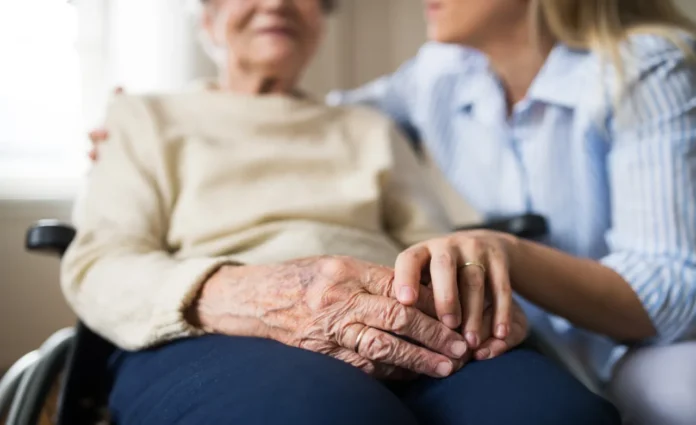Nursing home abuse is a deeply concerning issue that affects thousands of vulnerable seniors each year. Whether it manifests as physical harm, emotional distress, neglect, or financial exploitation, identifying and responding to abuse quickly is essential to protect your loved ones. This guide outlines 10 essential steps to take after uncovering nursing home abuse, empowering families to take immediate action, secure justice, and prevent future harm.
1- Recognizing Nursing Home Abuse
Signs of Nursing Home Abuse
Recognizing the signs of nursing home abuse can be challenging but critical in safeguarding your loved ones. It’s crucial to remain vigilant and observ9ant. Common indicators include:
- Unexplained injuries: Look for bruises, fractures, or cuts that cannot be clearly explained.
- Changes in behavior: If a resident suddenly becomes withdrawn, anxious, or fearful around specific staff members, this could be a red flag.
- Neglect: Signs such as poor hygiene, malnutrition, or unsanitary living conditions should not be ignored.
Personal care is vital, and if you notice any troubling changes, it’s essential to investigate further.
Types of Nursing Home Abuse
Nursing home abuse can manifest in various harmful ways. Understanding these types can help in identifying potential issues:
- Physical Abuse: This includes any form of physical harm, like hitting or restraining.
- Emotional Abuse: Name-calling, threats, or humiliation fall under this category, deeply affecting the victim’s mental health.
- Sexual Abuse: Any unwanted sexual advances or actions.
- Neglect: Failing to provide necessary care, leading to physical or emotional harm.
- Financial Abuse: Manipulating or stealing from a resident financially.
Recognizing these forms of abuse is pivotal in protecting your loved ones and ensuring their safety and well-being.
2- Immediate Actions to Take
Documenting Evidence
Once you suspect nursing home abuse, timely and meticulous documentation is crucial. This documentation can serve as invaluable evidence later. Consider taking the following steps:
- Photograph injuries: Use your smartphone to capture clear images of any visible wounds or bruises.
- Keep a detailed log: Note dates, times, and descriptions of any suspicious incidents or conversations you witness.
- Collect medical records: Obtain copies of any relevant medical documents that showcase the resident’s health before and after the suspected abuse.
These actions not only reinforce your case but also provide clarity on what transpired.
Reporting to Authorities
After gathering evidence, it’s imperative to report your findings with urgency. Contact the relevant authorities such as:
- Local health department: They can investigate violations of care standards.
- Adult Protective Services (APS): They specialize in cases of elder abuse.
- Law enforcement: If there’s immediate danger, involving the police is essential.
Acting promptly not only aids in protecting your loved one but can also help prevent future cases of nursing home abuse at the facility.
3- Seeking Legal Assistance
Consulting with a Lawyer
Navigating the complexities of nursing home abuse cases can be overwhelming, which is why consulting with a nursing home abuse lawyer is crucial. A qualified attorney can help illuminate your path forward. During your consultation, consider discussing:
- Details of the case: Share everything you’ve documented regarding the suspected abuse.
- Legal strategies: Ask how they plan to approach your case and the potential outcomes.
- Fees and costs: Understand their payment structure to avoid surprises down the line.
This initial step can provide you with confidence and clarity, knowing you have professional support.
Understanding Legal Rights and Options
It’s vital to know your rights and the available legal options. Residents in nursing homes have specific protections under state and federal laws. Here are a few essential rights to keep in mind:
- Right to a safe environment: Every resident deserves to feel secure and cared for.
- Right to privacy: Personal matters should always be treated with respect.
- Right to access medical care: Residents must receive timely and appropriate medical attention.
Your lawyer can help you navigate these rights and determine the best course of action, whether it’s filing a complaint, seeking compensation, or pursuing a litigation case. Understanding your options will empower you to advocate effectively for your loved one.
4- Protecting the Resident
Ensuring Safety Measures
Once you’ve taken steps to report the abuse, the immediate priority is ensuring the resident’s safety. Implementing effective safety measures is vital for their well-being. Here are some strategies to consider:
- Regular supervision: If possible, arrange for family members to visit frequently to keep an eye on the care received.
- Safety equipment: Ensure that the resident has the necessary mobility aids, alarms, or other devices to enhance their safety.
- Communicate openly: Encourage the resident to express any concerns they have about their care or treatment.
Taking these precautions can significantly improve their living conditions and provide peace of mind.
Considering Alternative Care Options
In some cases, it may be necessary to evaluate alternative care options for your loved one. If the current facility cannot ensure their safety, explore other possibilities such as:
- Home care services: Hiring professional caregivers to assist with daily living activities at home can be a comfortable solution.
- Assisted living facilities: These often provide a higher level of personal care in a more welcoming environment.
- Respite care: Temporary stays at another facility can provide immediate relief while you assess longer-term solutions.
Transitioning can be challenging, but prioritizing the resident’s safety and well-being can lead to a significantly improved quality of life.
5- Psychological Support for the Victim
Counseling and Therapy
In the aftermath of nursing home abuse, addressing the psychological needs of the victim is vital for their healing process. Professional counseling or therapy can provide a safe space for them to express their feelings and emotions. Consider these options:
- Individual therapy: A licensed therapist can help the victim navigate their feelings of fear, anxiety, or depression.
- Cognitive-behavioral therapy (CBT): This approach can assist in reframing negative thoughts and building coping strategies.
For example, a resident who previously felt isolated might benefit from personal therapy sessions that boost their confidence and help them process the trauma they experienced.
Support Groups and Resources
In addition to professional help, support groups can offer invaluable community and understanding. Participating in groups allows victims to connect with others who have shared similar experiences. Look for resources such as:
- Local support groups: Many communities have dedicated groups for survivors of elder abuse.
- Online forums: These platforms can connect victims with peers and experts around the country.
- Educational resources: Websites and hotlines provide additional information related to coping with abuse.
Encouraging participation in these groups can foster healing, reduce feelings of isolation, and ultimately empower the victim on their journey to recovery.
6- Advocating for Policy Changes
Raising Awareness
Advocating for policy changes surrounding nursing home abuse starts with raising awareness within your community. Sharing your story can illuminate the issue and encourage others to speak up. Here are some effective strategies:
- Host informational sessions: Organize community gatherings to educate others about the signs and dangers of nursing home abuse.
- Utilize social media: Platforms like Facebook and X can amplify your message, reaching a wider audience.
- Collaborate with local organizations: Partner with advocacy groups to increase outreach and support.
Sharing personal experiences can resonate deeply, motivating others to take action and support the cause.
Supporting Legislative Efforts
Advocacy doesn’t stop at raising awareness; supporting legislative efforts is critical in enacting change. Engage in the process by:
- Contacting lawmakers: Write letters or emails to your representatives about the need for stronger regulations in nursing homes.
- Participating in rallies: Join movements advocating for legislative reform to amplify your voice among others who share the same mission.
- Encouraging community support: Align community members to push for local laws that strengthen protections for residents.
Your commitment can lead to meaningful reform that better safeguards vulnerable individuals in nursing homes, ensuring their rights and welfare are protected.
7- Monitoring and Follow-Up
Regular Check-Ins
After addressing the immediate concerns of nursing home abuse, consistent monitoring is crucial for ensuring the victim’s ongoing safety and well-being. Regular check-ins can help you stay informed about their situation. Consider these strategies:
- Visit frequently: Make it a routine to visit your loved one, allowing you to observe their condition and care firsthand.
- Initiate conversations: Ask open-ended questions to encourage them to share their feelings about staff and their overall care.
- Document changes: Keep a journal of any improvements or issues you notice during your visits.
Personal anecdotes, like noticing a newfound confidence in a resident after starting therapy, can reaffirm the importance of these visits.
Reevaluating the Care Plan
Monitoring also involves periodically reevaluating the care plan to ensure it continues to meet the resident’s needs. Here’s how to approach this process:
- Assess current goals: Discuss with healthcare providers whether the existing care objectives are being met.
- Incorporate feedback: Regularly gather input from the resident and their family about their experiences and satisfaction with the care.
- Adapt as necessary: If issues persist, consider adjustments or alternative arrangements to better support the resident’s needs.
By staying proactive in these areas, you can help maintain a safe and supportive environment for your loved one, fostering a sense of stability and security.
8- Family and Caregiver Education
Educating Family Members
Education is key for both families and caregivers in preventing and addressing nursing home abuse. Ensuring family members understand the signs of abuse can empower them to take action. Here are practical steps to consider:
- Host informational workshops: Organize sessions that cover topics like recognizing abuse, communicating effectively with the facility, and understanding residents’ rights.
- Share resources: Provide family members with brochures and online articles about nursing home abuse to enhance their awareness.
- Encourage open discussions: Facilitate family meetings where concerns and insights about the care of the loved one can be openly shared.
For example, a relative who knows what to look for can act quickly if they spot signs of neglect.
Training Caregivers
In addition to educating family members, training caregivers is essential for fostering a safe environment. Well-informed caregivers can significantly reduce the risk of abuse. Focus on these training aspects:
- Recognizing signs of stress: Provide caregivers with tools to manage their own stress, which can reduce the likelihood of unintentional neglect.
- Effective communication techniques: Teach caregivers how to communicate compassionately with residents, ensuring their needs are heard and addressed promptly.
- Educational programs: Encourage participation in workshops focusing on elder care best practices, including dementia care and elder rights.
Investing in caregiver education not only enhances resident care but also cultivates a supportive culture within the nursing home, ultimately contributing to the safety and well-being of the residents.
9- Financial Considerations
Assessing Financial Damages
Understanding the financial implications of nursing home abuse is critical for seeking justice and support. Assessing financial damages involves evaluating both immediate and long-term costs related to the abuse. Consider these factors:
- Medical expenses: Calculate costs for additional medical care required due to the abuse.
- Emotional distress: Factor in therapy or counseling costs for psychological support.
- Loss of quality of life: Consider how the abuse has impacted the resident’s ability to engage in daily activities or enjoy life.
For instance, if a resident needs specialized therapy following an incident, these costs can add up quickly, emphasizing the need for a thorough assessment.
Seeking Compensation
Once damages are assessed, seeking compensation is the next step in addressing the financial burden that nursing home abuse can impose. Here’s how to approach this process:
- Consult a nursing home abuse lawyer: They can provide guidance on the type of claim to file and the evidence needed to support it.
- File a complaint: Depending on the situation, a complaint can be filed with regulatory agencies or directly against the facility.
- Consider settlement negotiations: Many cases can be settled out of court, providing quicker relief for victims and their families.
Being proactive in seeking compensation can help alleviate some of the financial strains caused by nursing home abuse, allowing the victim to focus on their healing.
10- Long-Term Prevention Strategies
Promoting Transparency
To effectively prevent nursing home abuse, promoting transparency within facilities is essential. Open communication fosters trust and accountability, making it more difficult for abuse to go unnoticed. Here are some ways to enhance transparency:
- Regular reporting: Encourage nursing homes to publicly share reports on care quality, incident records, and safety measures.
- Family involvement: Create opportunities for family members to participate in care discussions and decision-making processes.
- Feedback mechanisms: Implement systems that allow residents and families to voice concerns or suggestions anonymously.
For example, one facility that implemented monthly family meetings saw an increase in both satisfaction and safety, as families felt more informed and engaged.
Improving Oversight and Regulations
In addition to promoting transparency, improving oversight and regulations is crucial in safeguarding vulnerable residents. Consider advocating for:
- Stricter licensing requirements: Push for comprehensive background checks for all staff, along with ongoing training in elder care practices.
- Routine inspections: Advocate for more frequent, unannounced inspections to ensure facilities consistently meet quality standards.
- Clear reporting protocols: Develop clear procedures for addressing complaints, making it easier for families to report concerns without fear of retaliation.
By focusing on these long-term prevention strategies, communities can help create a safer environment for nursing home residents, significantly reducing the likelihood of abuse.
Did you find this helpful? Check out our other helpful articles on our website.
Read Also
- Ketamine-Assisted Therapies: Impacts on Employee WellbeingWorkplace stress is common today. Many employees feel tired, anxious, or burned out. Regular therapy can help, but some people need more support. Ketamine-assisted therapy is showing good results for mental health. A ketamine-assisted therapist guides each session safely. This therapy can improve mood, focus, and energy. Learning more about it can help teams stay… Read more: Ketamine-Assisted Therapies: Impacts on Employee Wellbeing
- The Future of Men’s Health: Why Telehealth Is Here to StayTelehealth isn’t just a pandemic trend that faded into the background. For Australian men, it has become one of the most practical, time-saving, and stress-free ways to manage everyday health — and it’s shaping the future of how we access care. Platforms like DOCTO, an Australian online doctor and specialist telehealth service, are leading the… Read more: The Future of Men’s Health: Why Telehealth Is Here to Stay
- How to Build a Simple, Clean Skincare Routine ?You don’t need a complicated skincare routine. It doesn’t have to be something that requires twenty different products and confusing steps. Your routine works well with just a few high-quality clean ingredients. The beauty industry keeps pushing more products, but your skin actually needs less. You only need a simple approach to get better results… Read more: How to Build a Simple, Clean Skincare Routine ?
- How Preventive Dental Care Supports Overall HealthHave you ever wondered how a simple dental checkup could impact your entire body? Oral health is more than just a bright smile. Studies show that poor dental habits can contribute to serious health problems. Gum disease and tooth decay are linked to heart disease, diabetes, and infections. Yet, many people overlook preventive dental care.… Read more: How Preventive Dental Care Supports Overall Health
- Seeing Clearly in a High-Tech World: A Deep Dive into Advanced Vision Care ServicesProtecting your eyesight isn’t optional—it’s essential. Modern eye care has evolved far beyond basic exams, offering advanced diagnostics, personalized treatments, and surgical innovations that keep vision sharp for life. A leading example is Intermountain Eye Center, home to specialists like Dr Fishburn Boise, where patients receive comprehensive, high-level vision care designed to preserve long-term eye… Read more: Seeing Clearly in a High-Tech World: A Deep Dive into Advanced Vision Care Services
- Why the Keto Diet Works for Some People—and Fails Dramatically for Others: An Ayurvedic Breakdown for Modern HealthcareThe keto diet has dominated weight-loss culture for years. For some people, it produces rapid fat loss, stable energy, and improved mental clarity. For others—especially those who gain weight easily—it leads to burnout, digestive distress, rebound weight gain, high cholesterol, and a metabolism that feels slower than before. Healthcare often frames this as a discipline… Read more: Why the Keto Diet Works for Some People—and Fails Dramatically for Others: An Ayurvedic Breakdown for Modern Healthcare
- How to Choose the Best Assisted Living Facility for SeniorsAre you looking for the right assisted living facility for a senior loved one? Choosing a place can feel overwhelming. There are many factors to consider, from care services to the environment. Safety, comfort, and social opportunities play important roles in daily life. Each senior has unique needs and preferences that must be met. Understanding… Read more: How to Choose the Best Assisted Living Facility for Seniors
- Burn Smart, Not Hard; Shape Burn: Clean Protein for Weight ManagementYou want to feel light, strong, and confident. You don’t want crash diets or fake promises. You need a plan that works with your body, not against it. That’s where Shape Burn comes in. You can burn fat without losing strength. You can eat better and stay full. You can manage weight in a way… Read more: Burn Smart, Not Hard; Shape Burn: Clean Protein for Weight Management









